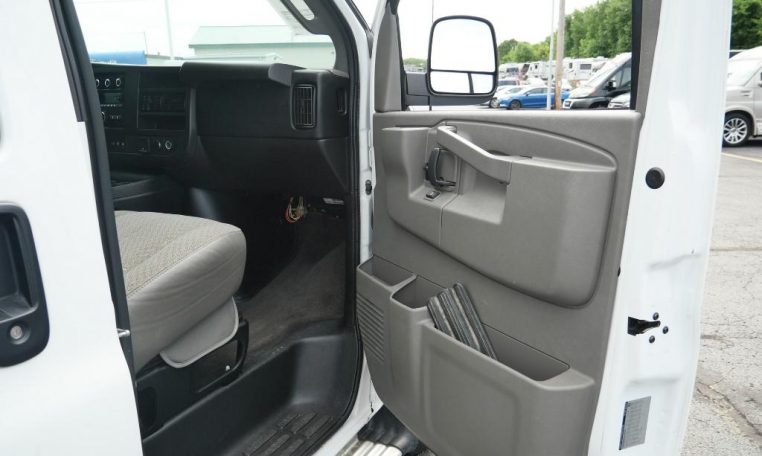
A retractable rear courtesy step for the passenger side doors was used on the Sportvan.
#CHEVY 15 PASSENGER VAN WINDOWS#
The Sportvan was more of a passenger-friendly van with windows molded into the van body. The 1965 model year introduced the Chevrolet Sportvan and GMC Handi-Bus. The grille openings were widened and received one additional slot just above the bumper to increase cooling. The 1965 model year included minor changes. A 2-speed Powerglide automatic transmission was optional.
#CHEVY 15 PASSENGER VAN MANUAL#
The Warner 3-speed manual transmission was standard with a column shift. The 90 hp (67 kW 91 PS) 153 cu in (2.5 L) four-cylinder engine was standard equipment. Basic amenities such as a heater and a right-front passenger seat were options. The base cargo model was the Chevyvan, available with or without windows and side cargo doors. The new van was of simple construction and its box shape was designed to maximize the hauling of cargo, tools, and equipment. Air conditioning, power steering, and power brakes were not available in the first-generation vans. GMC marketed its window van as "Handi-Bus". In 1965, Chevrolet added the "Sportvan", which featured windows actually integrated into the body. Windows were available as an option, but were simply cut into the sides from the factory. The first 1964 Chevrolet van was originally marketed and sold as a panel van for purely utilitarian purposes. A first-generation is identified by its single-piece flat windshield glass. The 1st-generation vans were available in only the short 90-inch wheelbase and were only sold with the standard 153 cu in (2.5 L) 90 hp straight-4 or a Chevrolet Straight-6 engine. The model was also sold by GMC as "Handi-Van". Engines and brakes were sourced from the Chevy II, a more conventional compact car than Chevrolet Corvair.
#CHEVY 15 PASSENGER VAN DRIVER#
The implementation of situating the driver on top of the front axle with the engine near the front wheels is called internationally a " cab over" vehicle. The 1964 Chevrolet van had a cab-forward design with the engine placed in a "doghouse" between and behind the front seats.

General Motors saw a market for a compact van based on a modified passenger car platform to compete with the already successful Ford Econoline and Dodge A100. Production of the Chevrolet Greenbrier ended during the 1965 model year.įirst-generation Chevrolet van refers to the first G-10 half-ton production years 1964 through 1966. The first General Motors van was the Chevrolet Corvair-based Chevrolet Greenbrier van, or Corvan introduced for 1961, which used an air cooled flat-six rear engine design, inspired by the Volkswagen bus. The second and third generations shared powertrain commonality with the C/K pickup truck model line.Īfter the 1996 model year, GM retired the G-Series vans, replacing them with the GMT600-platform Chevrolet Express and GMC Savana. The first two generations were forward control vehicles (with the engine placed between the seats) the third generation adopted a configuration placing the engine forward of the driver.

Produced across three generations ( 1964–66, 1967–70, and 1970–1996), the model line was sold under a wide variety of model names under both the Chevrolet and GMC brands. The vehicle was sold both in passenger van and cargo van configurations as well as a cutaway van chassis that served as the basis for a variety of custom applications. Introduced as the successor for the rear-engine Corvair Corvan/Greenbrier, the model line also replaced the panel van configuration of the Chevrolet Suburban. The Chevrolet Van or Chevy Van (also known as the Chevrolet/GMC G-series vans and GMC Vandura) is a range of vans that was manufactured by General Motors from the 1964 to 1996 model years. Pontiac Assembly Center, Pontiac, Michigan.


 0 kommentar(er)
0 kommentar(er)
